Cycads!! A hobby that became work
I love nature and seeing things grow and prosper. Cycads are, in my opinion, one of the marvels of nature, like a baobab. Originally I began this hobby with the intention of supplementing my pension when inflation requires an extra income. In the beginning it was a 10 year project, which became 15 years and now probably 20 years. I am thankfully not at the point where I require more income however, I am running out of space and have to get rid of some of my plants to make space available.
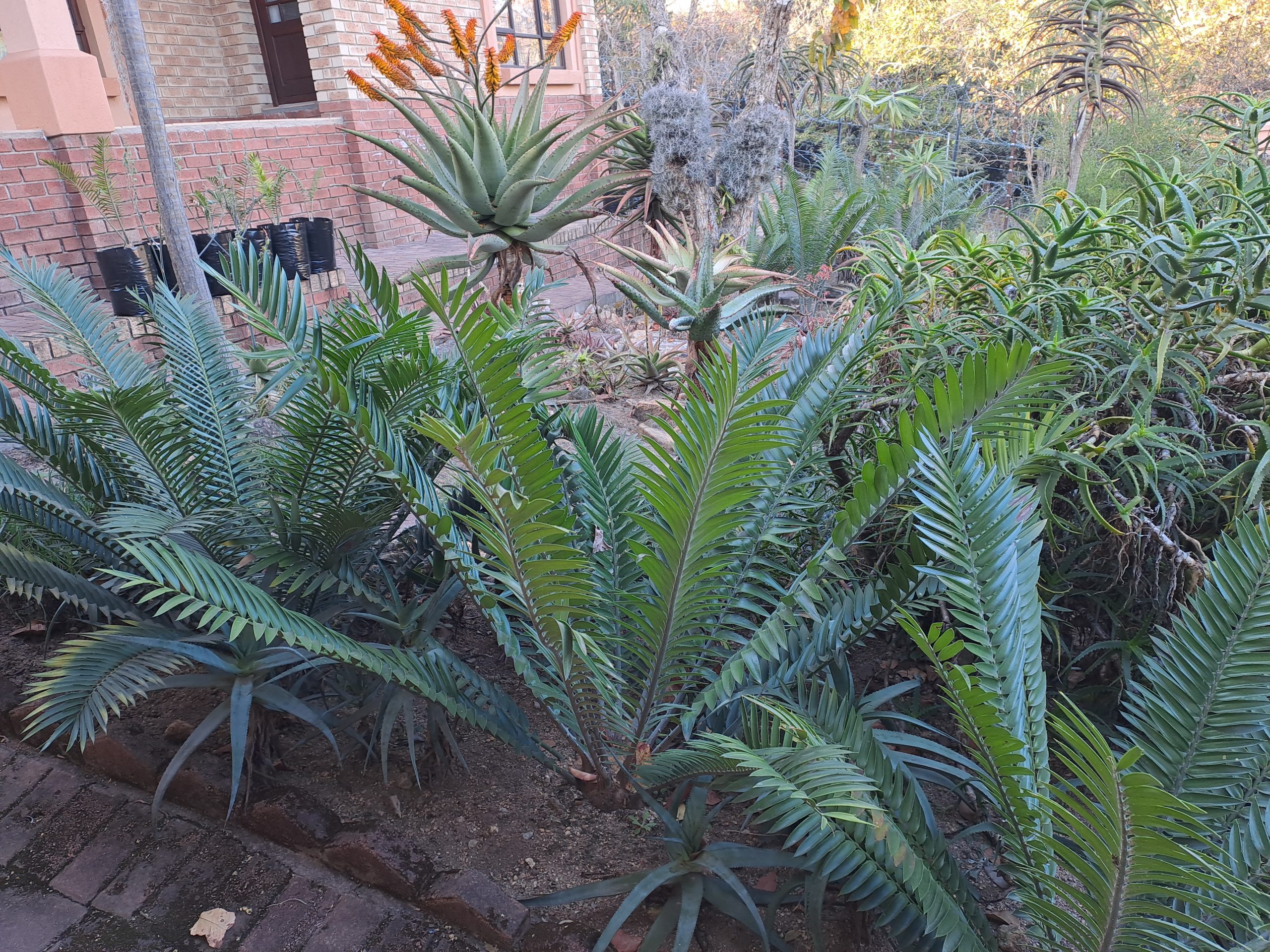
We stock 4 species of cycads as well as impala lilies
Visits are only by appointment, I stay in a security complex in Sonheuwel in Nelspruit and have to provide visitors with a code for access. If you would like to come and have a look, phone or WhatsApp or drop me a mail to arrange a visit.
Natalensis
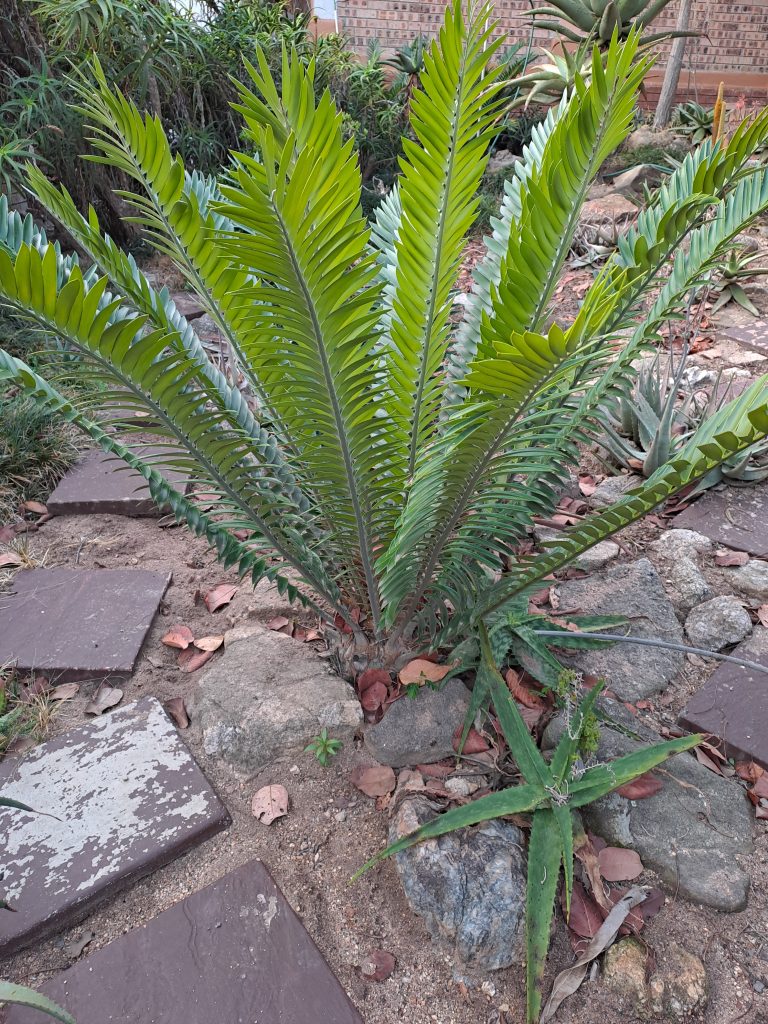
Vilosus
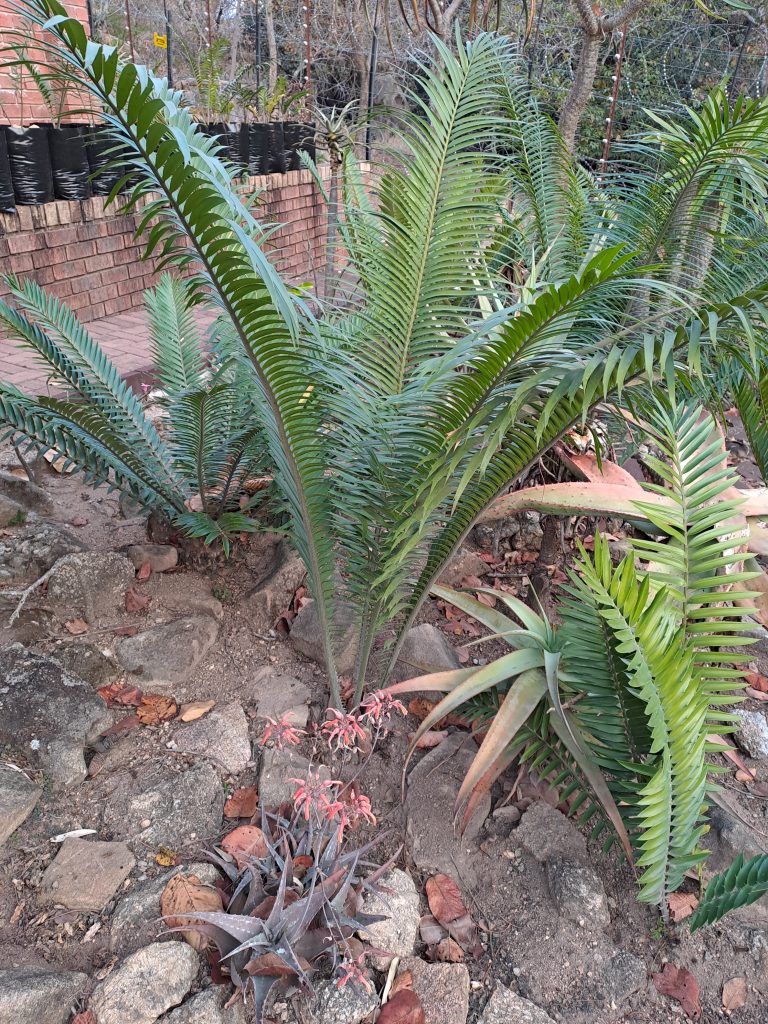
Ferox
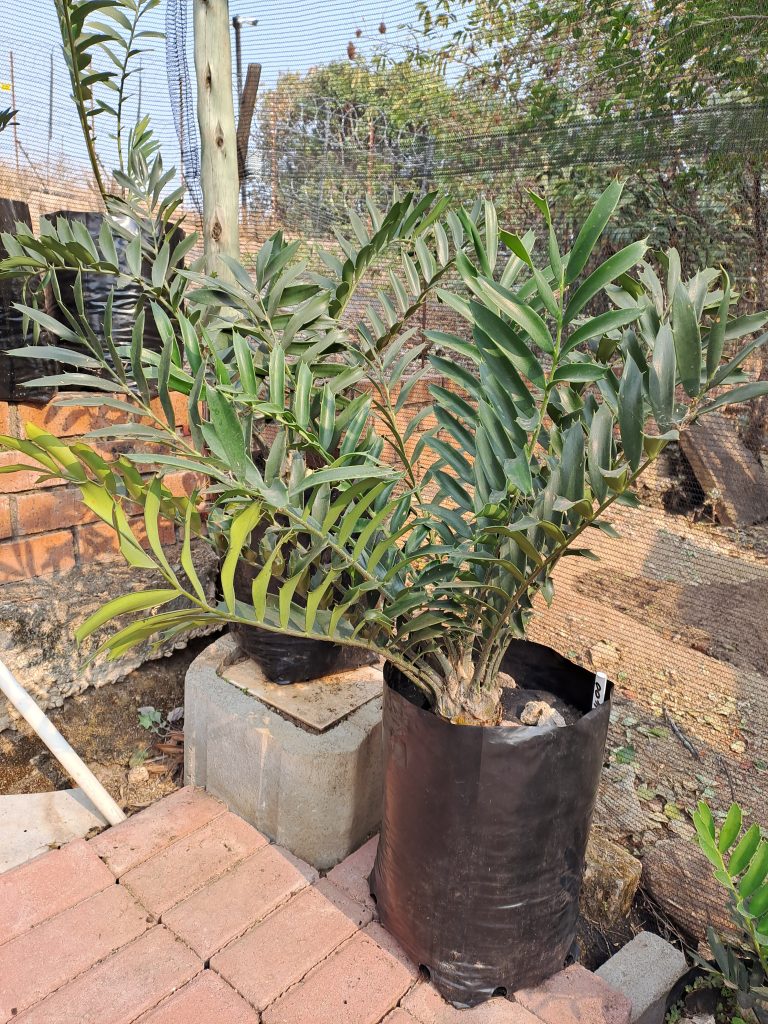
Senticosus
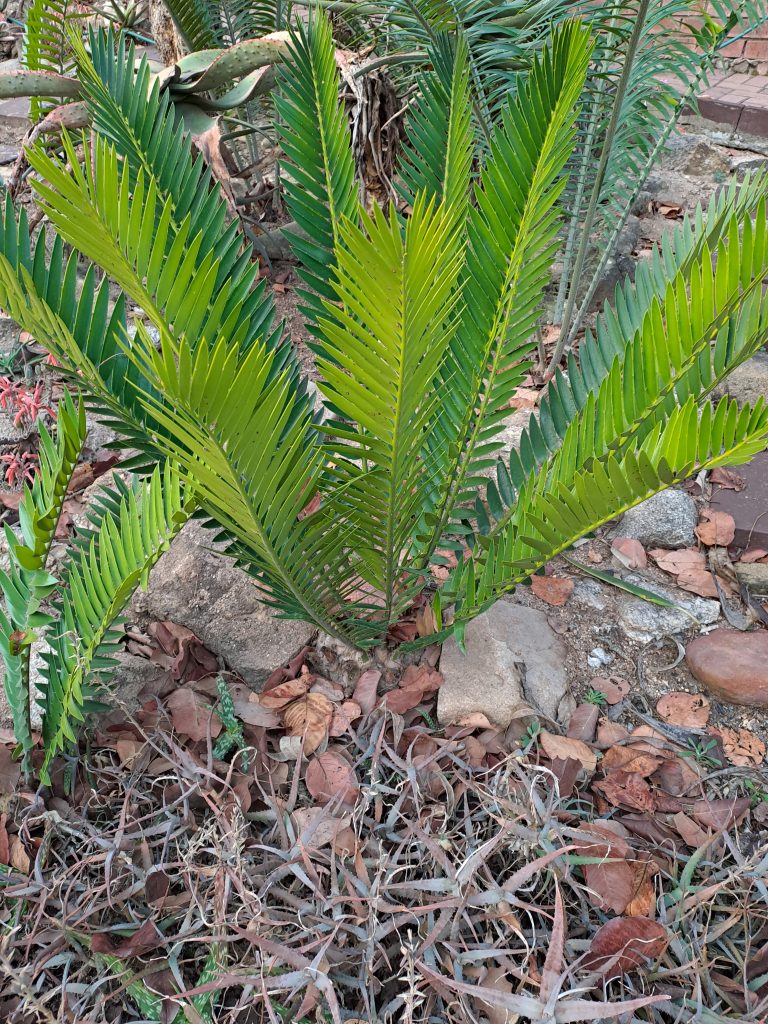
Impala lilies
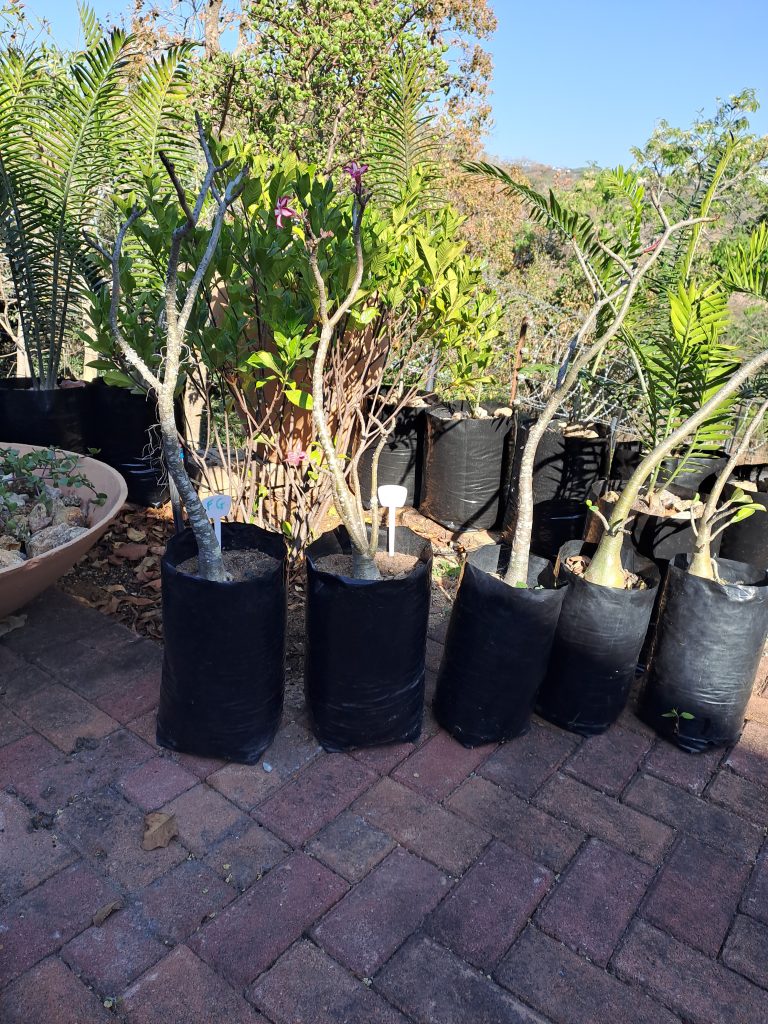
Things to know about cycads
Cycads are very tough plants when they are big but they have to be pampered and placed in the correct medium to survive the elements. They are succulents and have large bulbous roots below the surface that can withstand long periods without water and they hate standing in wet soil, they will rot very fast.
I have small and large plants
The price varies according to the size of the plant, it matters.
The prices of the four species are as follows in general:
Vilosus: Large R300, Medium R200 and small R150
Natalensis: Large R500 Medium R400 and small R200 to R300
Ferox: Large R300, Medium R250 and small R200
Senticosus: Large R500, medium R400 and small R300
Impala lillies: Large R50 and small R30
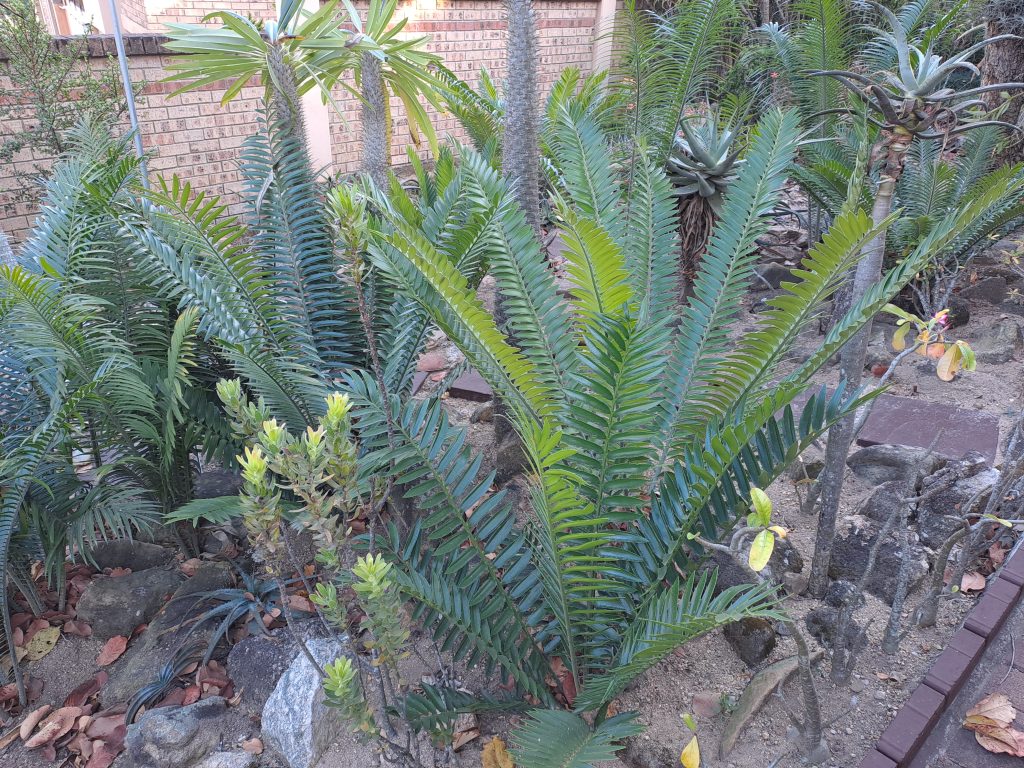
Natalensis
Encephalartos natalensis is an evergreen quick-growing cycad, up to 6.5 m high and with a stem or trunk of about 0.4 m in diameter. The stem sometimes branches, but reclines only when other stems emerge from the base. It has a golden, woolly crown, which increases on production of cones or new whorls of leaves. The leaves are of medium size, about 1.5-3 m long and slightly curved or straight. The leaflets are about 160-230 x 25-45 mm, dark green and entire or with 1-5 teeth on one or both margins. The lower leaflets are reduced to spines. New leaves and cones are covered with yellowish brown wool. There are separate male and female plants; both genders produce 2 or 3 orangy-yellow to orangy-red cones..
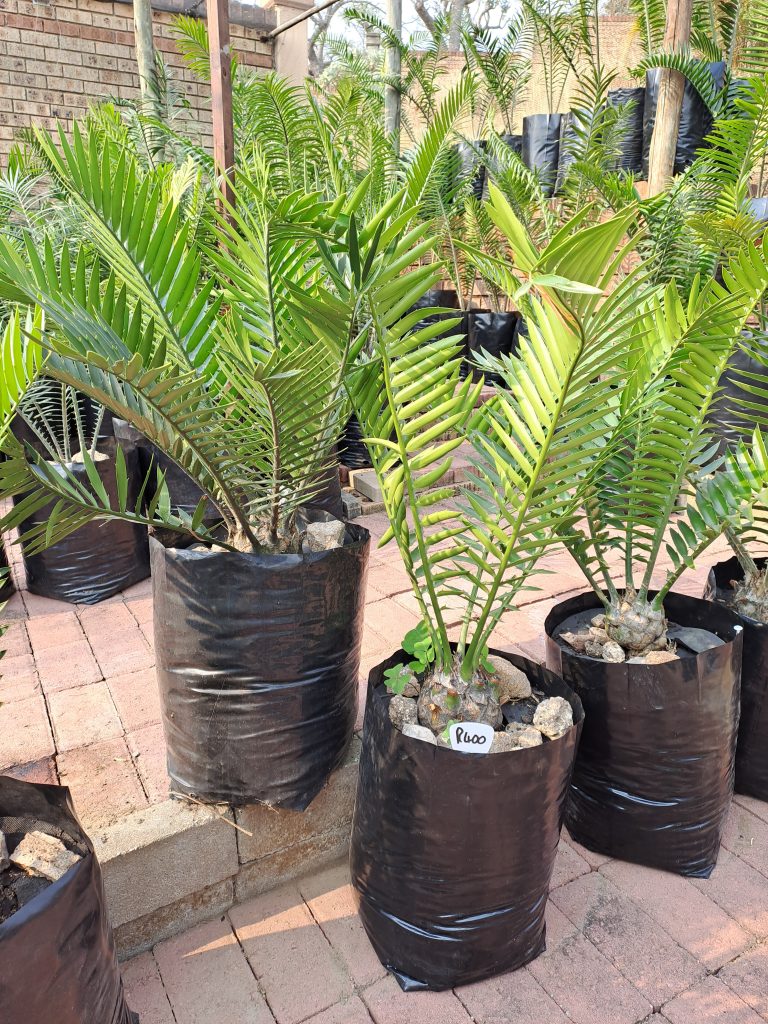
Vilosus
It is one of the most common ornamental dwarf cycads in Southern Africa. It is shade-loving and produces leaves which spread out gracefully, with glossy dark green leaflets. This species is a fast grower and in 5 to 8 years will develop into a substantial plant. This species is often found growing in clusters and the stem is usually subterranean. If a stem develops above ground, it may grow to a height of up to 0.4 m and a diameter of 250 mm, with the occasional sucker. The mature leaves are dark green, glossy and lighter green on the underside of the leaves. The leaves are 1.5 to 3 m long, with the median leaflets ranging from 150 to 250 mm in length. The width of the leaflets are 15 to 20 mm.
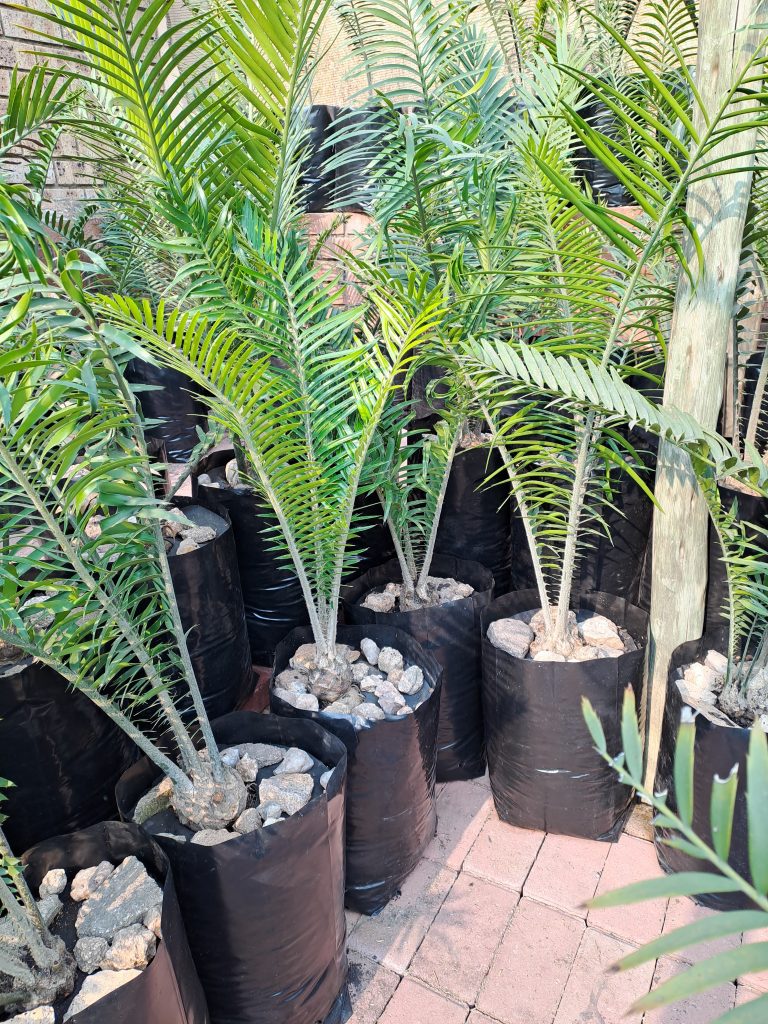
Ferox
The plants are usually single-stemmed or rarely branched with new suckers being produced from the base. The stems are subterranean (although very occasionally stems may be found reaching over a metre in length). The stems reach up to 35 cm across.
The arching leaves are 1-2 m long and bear numerous dark green, holly-like leaflets (15cm long and 3-5cm wide) with distinctly lobed teeth on both the upper and lower margin. The leaflets are moderately spaced at the base of the leaf, but are crowded and overlapping along the length of the leaf. Young leaves are often coppery brown and covered with fine hairs which are soon lost.
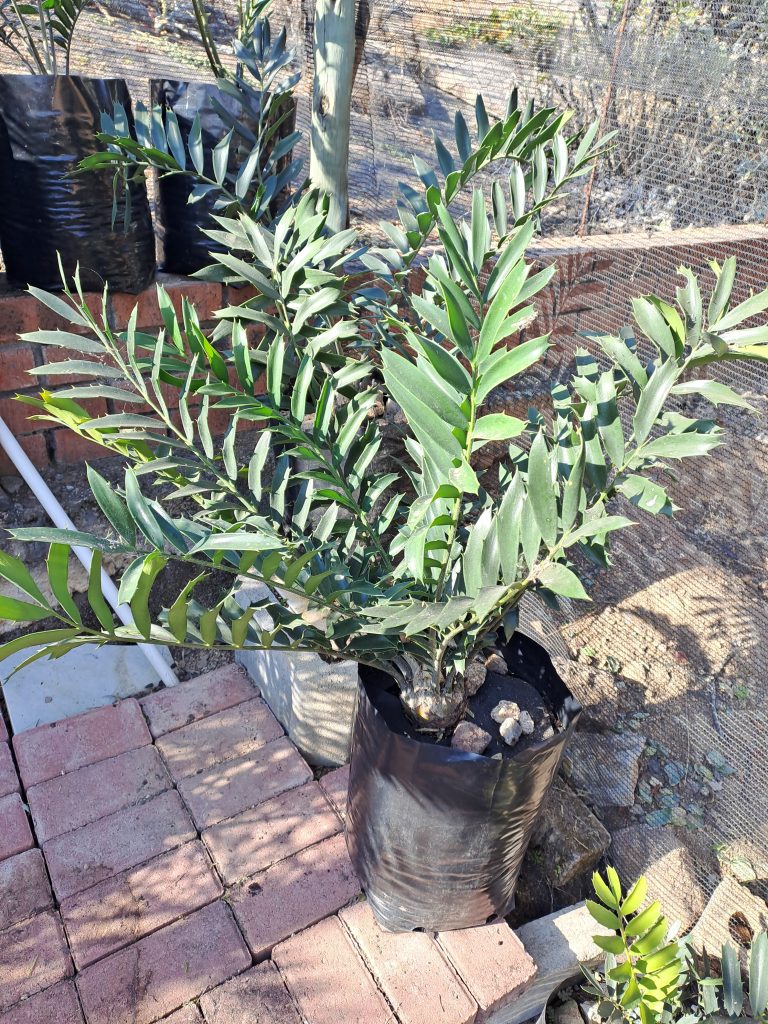
Senticosus
Encephalartos senticosus is a quick-growing, glossy dark green giant cycad, also known as the Lebombo, Jozini cycad (Eng.); lebombobroodboom (Afr.); isigqiki-somkhovu, ujubane (Zulu); sijekwane (Sotho). This species occurs from south of the Jozini dam in Northern KwaZulu-Natal in South Africa northwards along the Lebombo mountains to just north of Siteki in Swaziland. Plants are also found on the Mozambique side of the border. Recorded from 300 to 800 m.
This frost-hardy cycad prefers subtropical to warm climates and, as in many cycad species, it appreciates being planted in well-drained soil in sunny and partial shade areas.
Encephalartos senticosus is a quick-growing cycad, up to 4 m high and with a stem of about 300 mm in diameter. The stem is covered by remains of leaf bases, and has a woolly crown. The leaves are of medium size, about 1.1-1.8 m long, rigid and straight to somewhat arched and glossy dark green. The rachis (the axis of the leaf) is yellow and the leaflets are smaller in size towards the base of the leaf. They are hard, narrowly ovate and toothed, with the apices forming spines.

Cycads have given me many hours of fun and enjoyment. It is a long term relationship, I actually feel like I am selling one of my children when I part with one. I wish to pass that enjoyment on to you
Maarten van Rooyen
Owner of Poormans Plants